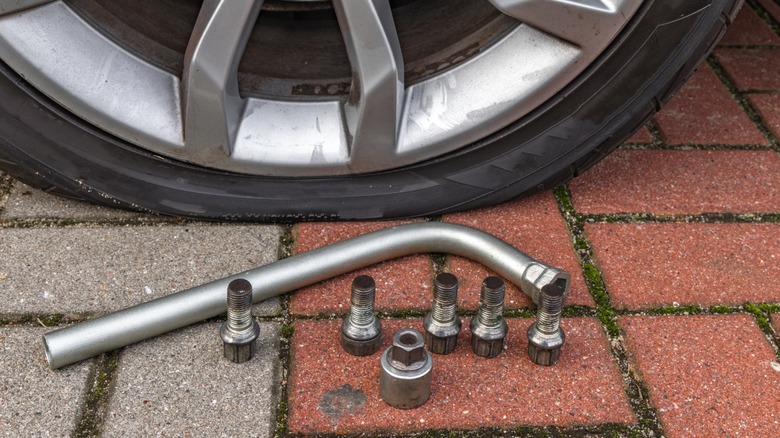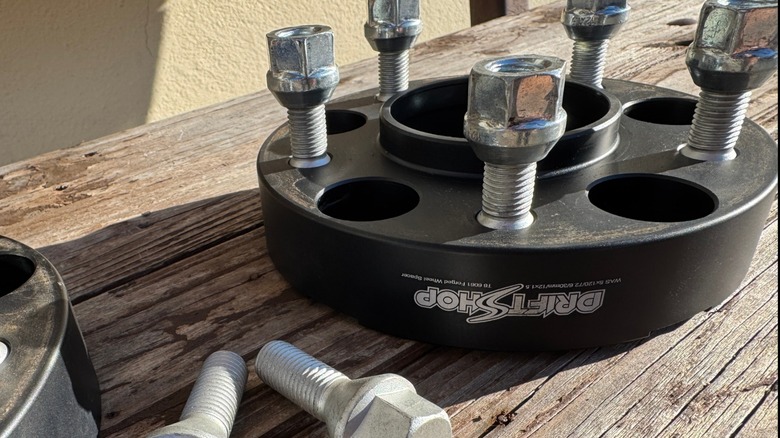Here's Why Car Manufacturers Made The Switch From Lug Nuts To Lug Bolts
For most people, replacing a tire means taking out the nuts holding down the current tire, removing the tire, mounting the new tire, and then re-tightening the lug nuts. These nuts are important for securing the tire to the wheel hub; using the wrong torque and failing to tighten them correctly are common mistakes people make when changing tires. However, an increasing number of cars today do not have these lug nuts; instead, they use lug bolts, which both attach the wheel to the hub and also secure it in place.
Lug nuts seem like an easier, foolproof method, so why the switch? A big part of the answer is geography. German brands like Audi, BMW, Volkswagen, and Mercedes-Benz, and other European marques have relied on lug bolts for decades. With their platforms being sold globally, that means Americans often end up with vehicles built to European engineering standards, like the now-discontinued Mercedes-based Chrysler Crossfire. The main advantage with bolts is that it lets automakers skip pressing metal into the hub during the assembly process, thereby reducing the number of parts in the wheel system. It might seem like a small difference, but it adds up for millions of cars.
Apart from shaving off some manufacturing resources, some engineers argue that lug bolts could provide more consistent clamping force by creating a tight connection. The extra stability and wheel balance matter when you're going fast at limitless autobahn speeds. Still, it's a trade-off: since the wheel has to be held in place while the bolts are started, it can be harder for the average driver or mechanic to handle.
Lug bolts can be a pain, but there are ways to mitigate it
The main headache with lug bolts becomes clear when you stop for a roadside tire change. With studs, you simply slide the wheel onto the rods and spin on the nuts, but bolts mean that the wheel has to be held in place while you line up the holes and thread the first bolt. Imagine having to do that in the rain or on the shoulder of the interstate — not fun. In some cases, the brake rotor itself can also shift when the wheel is removed, which means you may need to align both the rotor and the wheel before the bolts can go in.
You can solve some of these problems if you use a guide pin or alignment tool that comes in the factory toolkits of some cars, like BMW. This small threaded rod screws into the hub temporarily, letting the wheel hang on it while you start the bolts, essentially recreating the convenience of studs. While not as convenient, some hubs and wheels also have matching grooves or dowels to help seat the wheel properly before putting in the bolts.
If you're an enthusiast regularly swapping wheels, there are aftermarket stud conversion kits. These add permanent studs to a hub originally designed for bolts, which makes wheel changes quicker and reduces the risk of cross-threading (and ruining) the hub's internal threads. Specialist suppliers like BimmerWorld and ECS Tuning market these kits for BMW and Audi cars.

